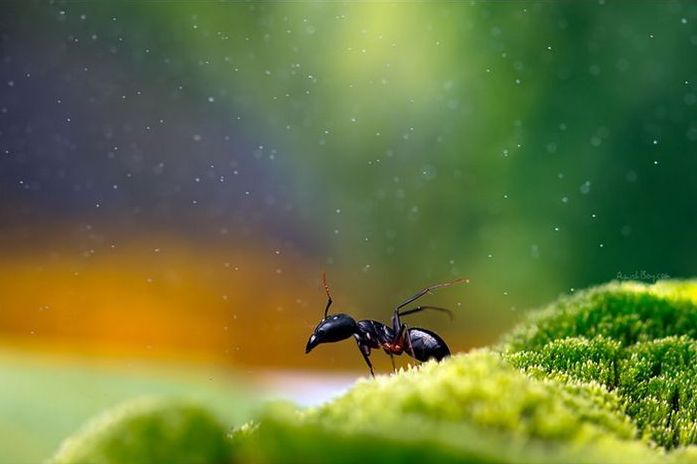|
|
Animal Macro Photography
|
• Placing an auxiliary close-up lens in front of the camera's taking lens. Inexpensive screw-in or slip-on attachments provide close focusing at very low cost. The quality is variable, with some two-element versions being excellent while many inexpensive single element lenses exhibit chromatic aberration and reduced sharpness of the resulting image. This method works with cameras that have fixed lenses, and is commonly used with bridge cameras. These lenses add diopters to the optical power of the lens, decreasing the minimum focusing distance, and allowing the camera to get closer to the subject.
• Employing the Scheimpflug principle to change the plane of focus at the image plane relative to the subject plane, thereby increasing effect depth-of-field for a given lens aperture. Requires use of a specialized lens that allows the optical section to be pivoted off center. Examples are TS lenses from Nikon, Canon, and other manufacturers, and products like the LensBaby and Zoerk Multi Focus System. Traditional view cameras with bellows systems and / or tilting backs also permit plane-of-focus adjustment. Because of the very narrow depth-of-field available in macro photography, and the consequent need to stop down the lens as far as possible to obtain adequate depth-of-field, employing the Scheimpflug effect allows both increased depth-of-field and the ability to make more use of existing lighting conditions. The ability to work at a relatively larger aperture and control depth-of-field, is one potential benefit of this equipment and technique.
• Attaching a telephoto extender between the camera body and the lens. A 1.4× or 2× teleconverter gives a larger image, adding macro capabilities. As with an extension tube, less light will reach the film or sensor, and a longer exposure time will be needed. However, working distance remains the same as without the teleconverter.
• Reversing the lens using a "reversing ring". This special adapter attaches to the filter thread on the front of a lens and makes it possible to attach the lens in reverse. Excellent quality results up to 4x lifesize magnification using fairly cheap, "standard" (not specially designed for macro) lenses can be produced. For cameras with all-electronic communications between the lens and the camera body, such as Canon EOS, reversing rings are available which allow all camera functions, including open aperture metering, to be used. When used with extension tubes or bellows a relatively cheap but highly versatile macro system can be assembled. This is done not to improve the magnification but to improve image quality; since standard lenses are optimized to focus the light from a distant subject onto a nearby film plane, reversing the lens in the circumstance where the object is closer than the film plane will improve image fidelity.
|
|









